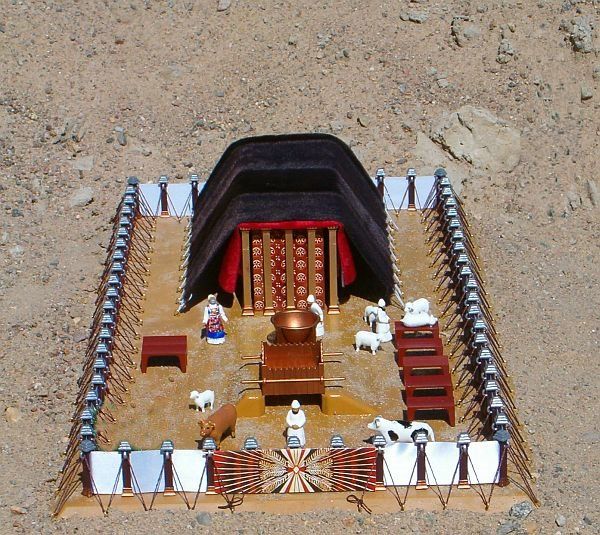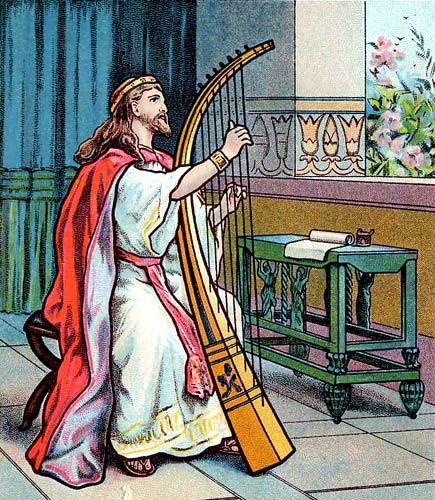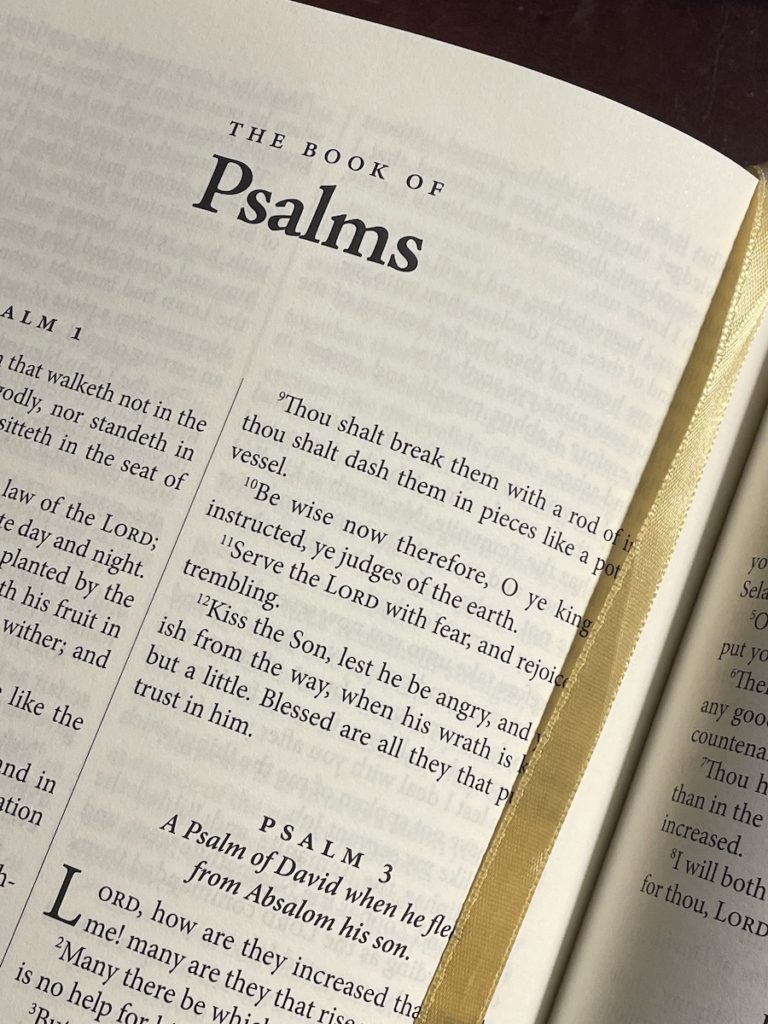
Fast Facts About the Tabernacle of Moses
The tabernacle (Heb. mishkan)was constructed circa 1450 b.c. at the foot of Mount Sinai. It took about a year to build.
Hebrew Names for the Tabernacle
- Mishkan means “tabernacle, dwelling or habitation.” Mishkan is from the root word shakan meaning “to dwell, abide, settle down, reside, tabernacle.”The word shechinah derives from shakan and refers to the manifest light or presence of YHVH among his people(Exod 25:8–9).
- Ohel (as in tent of the congregation/meeting) means “a nomad’s tent, dwelling, home, habitation”(Exod 29:42).
- Miqdash means “sacred place, sanctuary, holy place”and is from the primitive root qadash and means “to consecrate, sanctify, prepare, dedicate, be hallowed or set apart, be separate or holy” (Exod 25:8).
- Kodesh or the sanctuary because it was set-apart ( or kadosh) to Elohim (Exod 30:13).
- Ohel haeduth means “the tabernacle or tent of the testimony or witness” since it contained the ark of the covenant housing the Torah-law given to Moses, which was an abiding witness of Israel’s covenant with YHVH (Num 9:15).
- Mishkan haeduth means “tabernacle of the testimony” (Num 10:11).
Examples of YHVH Tabernacling With His People
The children of Israel have just left Egypt and are now trekking through the wilderness en route to the Promised Land. Within a couple of months, YHVH gives them their first assignment. In Exodus 25, he tells them to build a tabernacle. Why? He says to Moses, “And let them make me a sanctuary that I may dwell among them” (Exod 25:8). From the beginning of time, in the Garden of Eden, Elohim has wanted to “hang out” with man. Elohim’s desire to dwell or tabernacle with man is a theme that runs from Genesis to Revelation. We see this idea repeated in the Testimony of Yeshua (the New Testament).
John 1:14, “And the Word was made flesh and dwelt among us, (and we beheld his glory, the glory as of the only begotten of the Father,) full of grace and truth.” The word dwelt (Gr. skenoo) means “tent or tabernacle.” The Greek word skenoo most likely derives from the Hebrew word shakan meaning “to dwell, abide, settle down, reside, tabernacle”and is the root word for mishkan, which is the main name for the Tabernacle of Moses.
Luke 2:7, The baby Yeshua was laid in a “manger.” This may have been a sukkah or tabernacle, which is the flimsy little hut that Israelites build during the biblical feast of Sukkot or Tabernacles as commanded in the Torah (Lev 23:33–43). We see the connection between manger and sukkot in Genesis 33:17 where Jacob built booths (or tabernacles; Heb. succot or sukkot, sing. sukkah) for his livestock showing us that the Hebrew word sukkot can also mean “livestock barn or manger” as well as a temporary habitation where Israelites dwell during the biblically commanded festival of Sukkot. This raises the possibility that Yeshua was born in a festival sukkah during the feast of Sukkot — not just an animal barn. The LXX Greek word for sukkot in Gen 33:17 is skenas meaning “habitation, dwelling or tabernacle” and is the same word used in John 1:14 and Revelation 21:1–3 in reference to Yeshua tabernacling with his people. Putting all the pieces together, Yeshua was likely born in a sukkah-manger most probably on the Feast of Sukkot with a human sukkah (or body, of which the physical sukkah during Sukkot is a metaphorical picture) in order to redeem man from sin, so that Yeshua might tabernacle with redeemed men forever in the New Jerusalem.What an amazing Truth picture is presented before us when we put all the pieces of the puzzle together!
Revelation 21:1–3, “Now I saw a new heaven and a new earth, for the first heaven and the first earth had passed away. Also there was no more sea. Then I, John, saw the holy city, New Jerusalem, coming down out of heaven from Elohim, prepared as a bride adorned for her husband. And I heard a loud voice from heaven saying, ‘Behold, the tabernacle of Elohim is with men, and He will tabernacle with them, and they shall be His people. Elohim Himself will be with them and be their Elohim.’” The word tabernacle in verse three is skenoo in the Greek, the same word used in John 1:14.
Examples of YHVH’s People Tabernacling With Him
The talithe (also talit) or prayer shawlworn by Jewish men is an examples of YHVH’s people tabernacling with him. The word tal-ithe means “little tent.” Each Hebrew man has his own little tabernacle, tent or prayer closet to pull over his head whenever he wants to tabernacle or commune with his Elohim. When a talit is spread out with one’s arms it resembles a bird with wings. This represents YHVH’s “wings” forming a protective shield or brooding over his people. Such a place becomes a place of refuge (Ps 91:1,4). The Spirit of Elohim brooded over the waters of the earth at creation (Gen 1:2). Yeshua spoke of his desire for Jerusalem as a mother hen spreads out its wings and gathers together its young (Matt 23:37). In ancient Mideast culture, a man would cast his outer garment over his wife-to-be as an act of claiming her for marriage. In Ezekiel 16:8, YHVH spread is “wings” (Heb. kanaph meaning “edge, extremity, wings, bird’s feathered wings”) over his bride, Israel, to cover her nakedness. The Jewish wedding canopy or chuppah represents this.
Constructing the Tabernacle — All Israel Was Involved
All Israel contributed to the building of the tabernacle (Exod 25:1–7), yet YHVH chose two Israelite artisans, Bezalel and Aholiab (Exod 31:1–6), filled them with the Spirit of Elohim “in wisdom, understanding, knowledge and in all manner of workmanship…” This teaches us that the work of YHVH is a joint effort of the entire body of YHVH-Yeshua, but that YHVH will endow certain individuals with unique gifts of the Spirit in order to accomplish his specific plans and purposes (Eph 2:22; 4:11; Rom 12:4–8; 1 Cor 12 and 14).
The Israelite Encampment Around the Tabernacle
The Israelites camped around the tabernacle (Num 2:1–34). On the east side were Judah, Issachar and Zebulun; on the South side were Reuben, Simeon and Gad; on the west side were Ephraim, Manasseh and Benjamin; and on the north side were Dan, Asher and Naphtali. According to the numbers of the fighting men given in Numbers 2, we see that the encampment of Israelites around the tabernacle formed a perfect Paleo-Hebrew letter tav, which looks like a cross or our small letter t. This is amazing when added to the fact that everything in and around the tabernacle pointed to Yeshua the Messiah, to his redemptive work on the cross and the steps of each person must take to be reconciled to Elohim and eventually to inherit eternal life. Moreover, the Levites camped around the tabernacle forming a protective perimeter between the Israelites and the tabernacle itself (Num 1:53), even as Yeshua provided the five-fold ministry of apostle, prophet, evangelist, shepherd or pastor and teacher to surround the church, to edify the body of Yeshua and to bring them into the unity of the faith (Eph 4:11).
A Quick Tour of the Tabernacle

The Altar of the Red Heifer (Num 19:1–11)
See the article toward the end of this teaching on the red heifer where we discuss how it relates to Yeshua’s death at the cross. It is necessary for each saint to visit this altar representing the cross, which was located just outside the tabernacle, before being allowed into the tabernacle as the writer of Hebrews informs us (Heb 13:12–13).
The Outer Curtain (Exod 27:9–19)
The tabernacle’s outer court was approximately 150 feet long by 75 feet wide (or 11,250 square feet, which is about one-fourth of an acre) in size.
The curtains of the outer court (Exod 27:9–19) were made of fine white linen and was seven-and-a-half feet tall. The linen curtains speak of robes of righteousness the bride of Yeshua will wear on her wedding day (Rev 19:8).
Sixty pillars supported the outer curtain. They were set in heavy bronze (or brass) bases topped by silver capitals. These pillars represent redeemed humanity wearing robes of righteousness. Wood symbolizes humanity, while bronze symbolizes judgment against man because of sin, and silver represents redemption or Elohim’s ransom price for man’s sin.
The Door to the Tabernacle (Exod 27:16–17)
The door of the outer court curtain contained three colors woven into white linen fabric: blue, purple, crimson, and white. These four colors speak of different attributes of Yeshua, whom Scripture likens to the door of salvation (John 10:1–18). These four colors combine to form a full picture of Yeshua, the Redeemer and Savior of Israel. Only through him can man come to the Father, have salvation, eternal life and inhabit the glorious New Jerusalem pictured by the glory cloud over the Holy of holies in the tabernacle. The four colors also correspond to the four faces of the living beings around the throne of Elohim (Ezek 1).
Crimson symbolizes the human aspects of Yeshua, for red is the color of man and red clay from which YHVH created man (adam). Some Bible commentators believe this points to the Gospel of Mark, which reveals the nature of Yeshua at the pashat (the simpleor plain level) of biblical understanding. Some see this as corresponding to the ox cherubim and the tribe of Ephraim, which had on its banner an ox. According to Hebrew roots commentator and linguistic scholar James Trimm, “Mark presents the Messiah as the servant (the servant who purifies the Goyim in Isa 52:13, 15) the “my servant the Branch” of Zech 3:8 who is symbolized by the face of the Ox in Ezekiel 1 (the Ox being a servant, a beast of burden). Mark does not begin with an account of the birth of Messiah as do Matthew and Luke because, unlike the birth of a King, the birth of a servant is unimportant, all that is important is his work as a servant which begins with his immersion by [John]. Thus Mark’s simplified account omits any account of Yeshua’s birth or preexistence and centers on his work as a servant who purifies the [people of the nations].”
Continue reading






